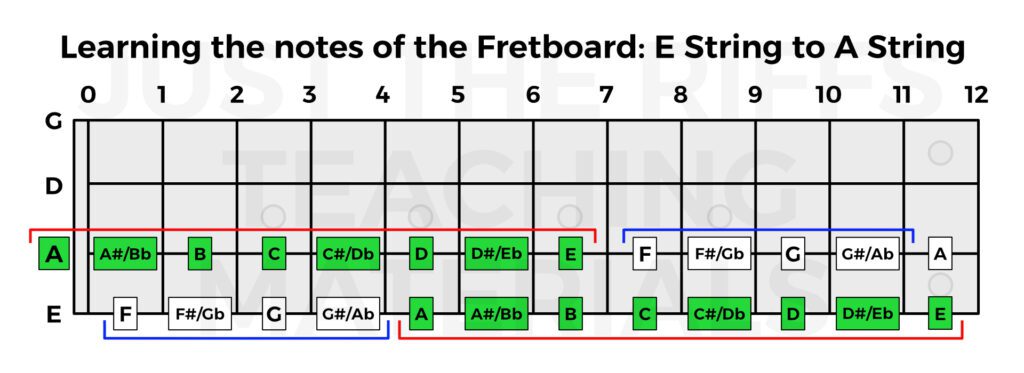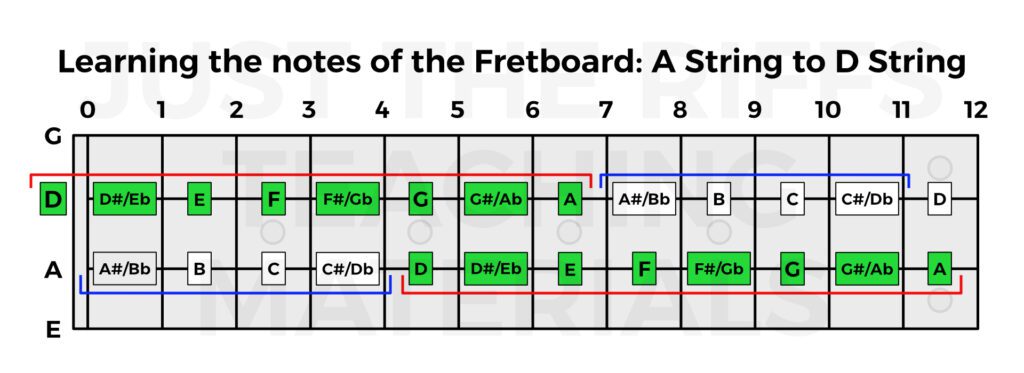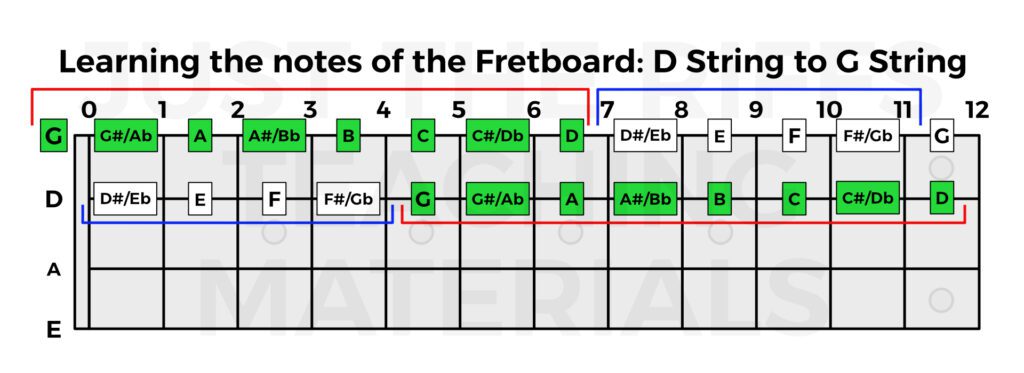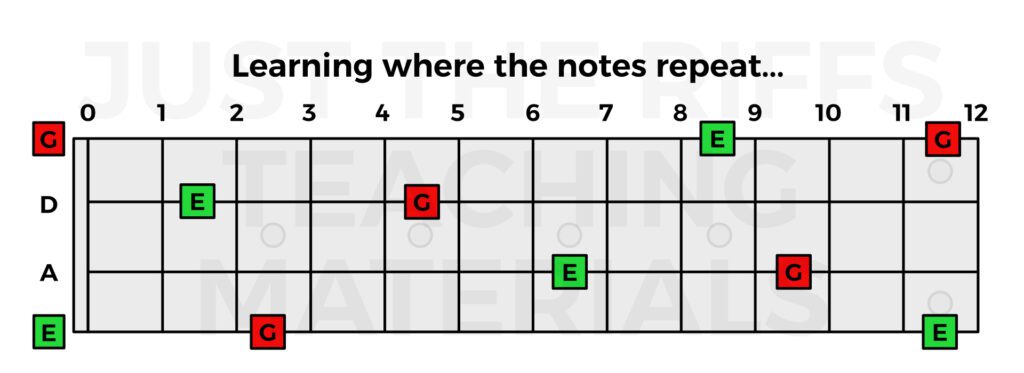
There are so many “use my method to learn the notes and become a bass wizard!” schemes out there.
Truth is, there absolutely are a couple of patterns that can help but it simply comes down to making the effort to memorise a few things.
- 1 - You only need to learn 12 notes. That’s it. Learn 12 things and you know ALL the notes you’re ever going to need.
- 2 – Learn where and how they repeat.
That’s it. It does require you to do some work but it’s not going to take you a decade of monastic study by candlelight to get it…
Just learn 12 notes and where they are…
Yep. Let’s start on the E String:

All the notes on the entire instrument are contained right here. The good news is that once you’ve learned this group of 12 notes along the E String, you’ve already learned the 1st 8 notes of the next string!
Don’t believe me? Well, let’s take a look...
Here are the notes of both the E and A Strings.

This is where it gets interesting and useful: ALL THE NOTES from the 5th fret up to the 12th fret on the E String are the same as the notes from the open A on the A String up to the 7th fret (red brackets).
The same idea applies with the A String to the D String (red brackets):

Same with the D String to the G String (red brackets):

You might be asking, "How is this useful?
Well, if you spend a week drilling yourself on learning just the notes of the E String, at the end of that week, you’ll already know 2/3rds of the A string as well!
Saves you a bit of time, right? 👍🏽
Same applies when learning the A String; learning it all means you then know 2/3rds of the D String! Same with the D and G Strings…
Take note: on each String, the notes in frets 1-4 repeat up an octave across frets 8-11 (blue brackets) on the next string.
As a Bass Player, you need to know where each note is so that you can understand instantly when someone says, “start at B♭ on the 6th fret…” that they mean 6th fret on the E String.
This is important because the same note is present at the same pitch at the 1st fret on the A String but the different positions open up different patterns and shapes and may make playing whatever part you’re playing more melodic and easier.
For example, here are where all the E and G notes are within the 1st 12 Frets across all 4 Strings.
Knowing this stuff and being able to recognise the patterns will help you no end.

None of this nuts-and-bolts stuff is sexy; it’s not fun (unless you’re a nerd like me) but it’s absolutely essential if you’re going to play your instrument and master it.
Hopefully this has helped someone out there in the deep end a little bit. Until the next lesson, happy riffing.